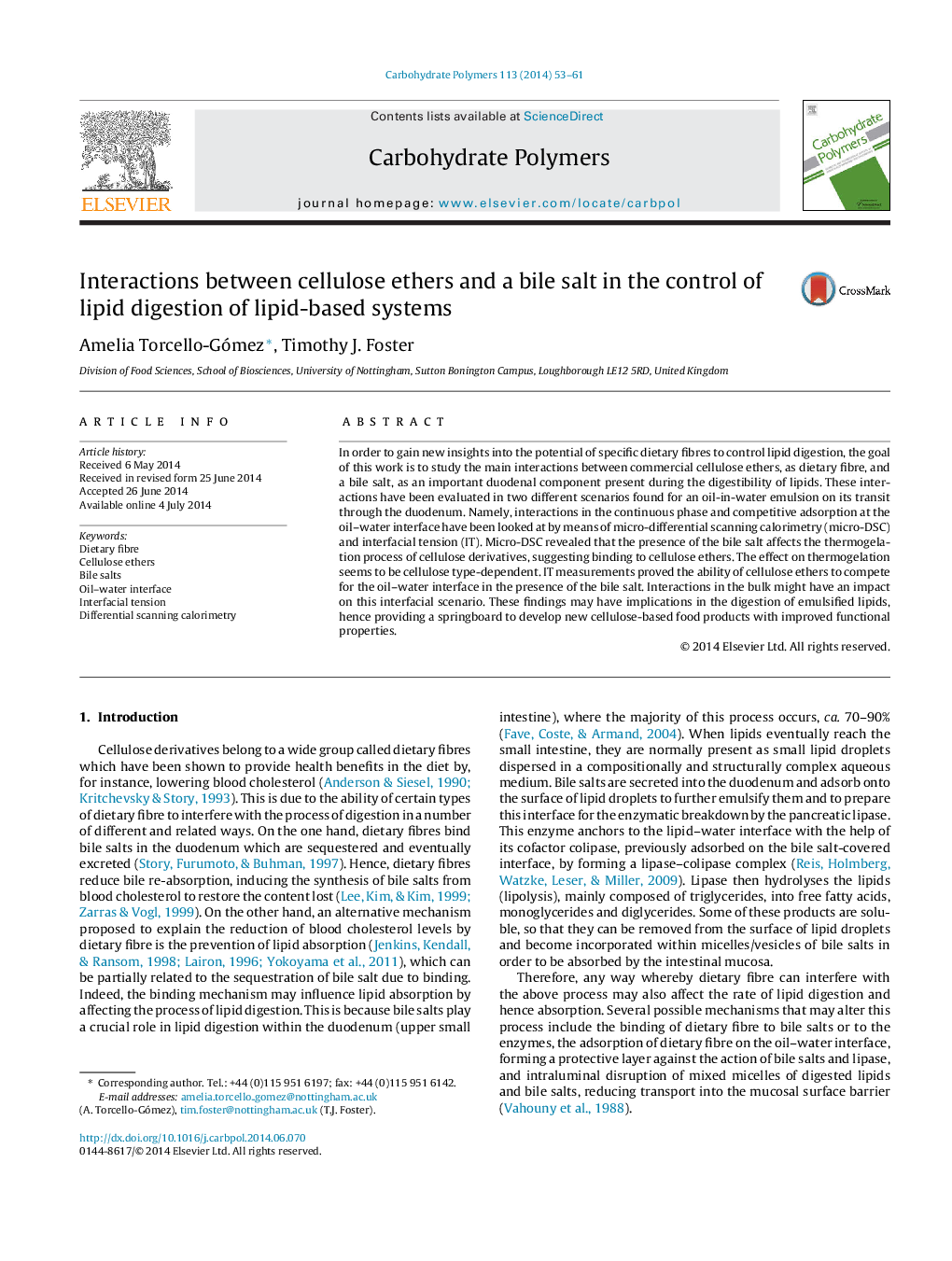| Article ID | Journal | Published Year | Pages | File Type |
|---|---|---|---|---|
| 7790820 | Carbohydrate Polymers | 2014 | 9 Pages |
Abstract
In order to gain new insights into the potential of specific dietary fibres to control lipid digestion, the goal of this work is to study the main interactions between commercial cellulose ethers, as dietary fibre, and a bile salt, as an important duodenal component present during the digestibility of lipids. These interactions have been evaluated in two different scenarios found for an oil-in-water emulsion on its transit through the duodenum. Namely, interactions in the continuous phase and competitive adsorption at the oil-water interface have been looked at by means of micro-differential scanning calorimetry (micro-DSC) and interfacial tension (IT). Micro-DSC revealed that the presence of the bile salt affects the thermogelation process of cellulose derivatives, suggesting binding to cellulose ethers. The effect on thermogelation seems to be cellulose type-dependent. IT measurements proved the ability of cellulose ethers to compete for the oil-water interface in the presence of the bile salt. Interactions in the bulk might have an impact on this interfacial scenario. These findings may have implications in the digestion of emulsified lipids, hence providing a springboard to develop new cellulose-based food products with improved functional properties.
Keywords
Related Topics
Physical Sciences and Engineering
Chemistry
Organic Chemistry
Authors
Amelia Torcello-Gómez, Timothy J. Foster,
